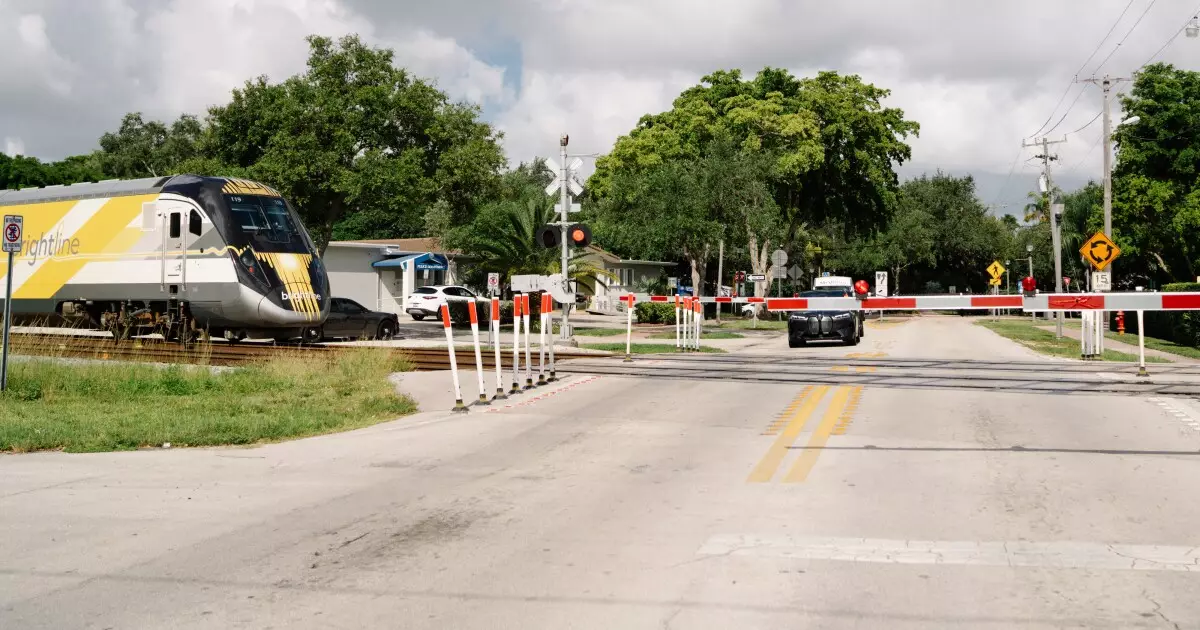The recent collision of a Brightline train with a Delray Beach fire truck underscores the ongoing complexities and challenges associated with the operations of high-speed rail services in densely populated areas. This incident is not merely a standalone event but rather part of a larger narrative involving the increasing scrutiny on railroad safety in the United States. The Brightline train, known for its speeds reaching up to 125 miles per hour, highlights the intersection of technological progress and public safety concerns in the realm of transportation.
High-speed rail, while offering numerous benefits such as reduced travel times and increased connectivity across major urban centers like Orlando and Miami, brings significant operational challenges. The recent accident, which resulted in injuries to both firefighters and train passengers, raises questions about the adequacy of safety measures in place to protect individuals on and around the railways. Despite Brightline’s assurances regarding safety as their top priority, the incident exposes potential vulnerabilities in the systems designed to prevent such accidents.
The National Transportation Safety Board (NTSB) is currently investigating the crash, which marks one of several similar occurrences in recent months. Earlier this year, three tragic fatalities occurred along the Brightline corridor, leading to heightened public concern and scrutiny about the safety track record of rail services. These incidents underscore the vital need for a thorough evaluation of all safety protocols and the effectiveness of current infrastructure investments in mitigating risk.
Florida’s infrastructure, particularly in relation to highway-rail crossings, presents unique challenges to safety. Preliminary statistics from the Federal Railroad Administration indicate that Florida recorded 122 highway-rail grade crossing collisions in 2023, positioning it as a state of concern for railway safety. While Brightline operates with advanced safety features, such as new crossing gates, the persistent issues underlying these collisions evoke a community-wide accountability, as stated in the company’s statements following the accident.
An investment analyst remarked that while the Brightline route experiences accidents, they do not necessarily denote systemic negligence on the part of the operator. Instead, the analysis suggested that many incidents arise from individuals deliberately bypassing safety measures, implying a societal responsibility to adhere to safety protocols at crossings. This perspective highlights a critical facet of the broader safety narrative—the necessity of public education and awareness relating to railway systems.
Despite the unsettling nature of railway accidents, analysts remain cautiously optimistic regarding the financial viability of Brightline. The investor noted that previous concerns regarding safety have been somewhat alleviated by the company’s consistent reporting that it has not been found liable for accidents, largely attributing incidents to external factors involved in human behavior. However, the acknowledgment of accidents within bond documents signals an awareness of the adverse implications they may have on reputation and financial performance.
In light of the recent collision, the bond market’s response is another matter of considerable interest. Brightline’s high-yield tax-exempt debt offerings aim to assure investors even amidst operational vulnerabilities. The company’s ability to underline safety in its bond documents while simultaneously issuing new debt signifies a nuanced approach, where investors are enticed by potential returns despite existing risks associated with accidents.
As the NTSB investigation unfolds, the Brightline incident provides an opportunity to critically assess rail safety standards nationwide. High-speed rail services exemplify an advanced transportation model; however, they necessitate a commitment to education and continuous improvement of safety features. Collaboration between rail operators, community stakeholders, and governmental agencies is paramount in forging a path toward enhanced safety measures that protect passengers and emergency response teams alike.
While high-speed rail services like Brightline present remarkable advancements within the transportation sector, they also introduce complex layers of risk and responsibility that demand unwavering attention. Only through a collective commitment to safety can stakeholders ensure that such tragic incidents are minimized, if not entirely prevented, allowing for the continuation of innovative rail services that prioritize both efficiency and safety.

